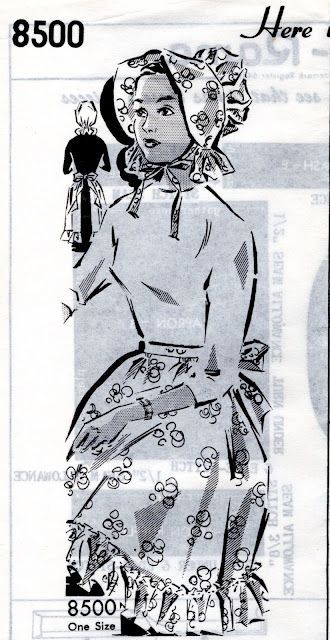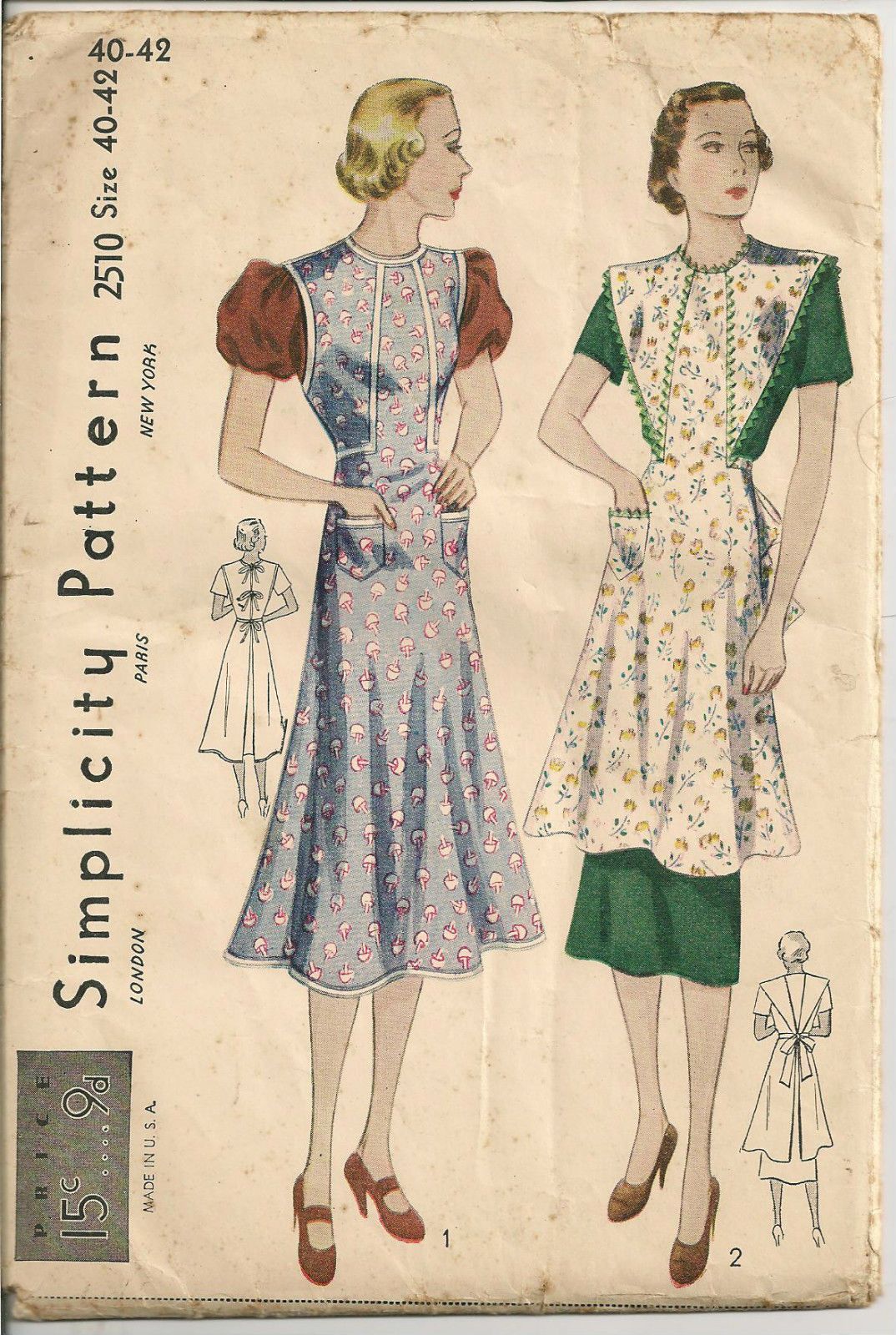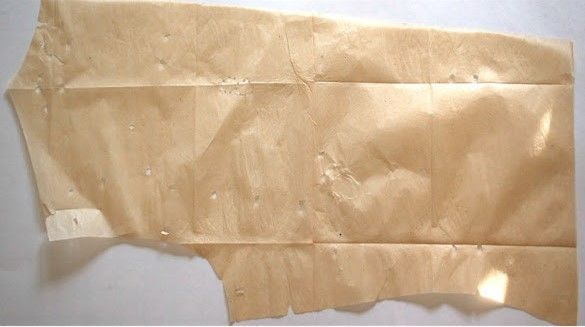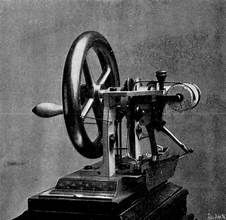Blog
Between the Apron Strings Blog
Blog Posts Coming Soon

By Yvonne Cory
•
May 13, 2024
Why are bonnets appearing along with aprons, you might ask? The reason is bonnets were combined with aprons in two ways. (A) as an apron and bonnet ensemble or set, and (B) a piece of cloth designed as an apron but also worn as a bonnet. Patt-o-Rama, a syndicated house name pattern for years sold a pattern for the letter (A ). This combination of bonnet and apron were often made up in red and white gingham and worn by all the ladies running booths at a church social or bazaar.
By Yvonne Cory
•
May 13, 2024
Early 1900 magazines offered patterns also. One magazine was called, “Farm and Fireside”. It offered the homemaker a variety of patterns. A full-length coverall apron and dust cap was one of the early patterns. This ensemble was popular for nursing and serving occupations also. Farm and Fireside was a magazine published between 1879 and 1939.

By Yvonne Cory
•
May 13, 2024
Final four - major apron pattern company- Vogue. The pattern company was formed in 1914, and it was in 1916, the patterns started to be sold in department stores for around 15 cents each. Before the company produced patterns, it was publishing a fashion magazine. Designs were considered fashion-forward, featuring styles of important designers. This concept was established with the early publisher, who capitalized on women’s dress clothes to look like “Silver Screen” stars. In 1949, Vogue patterns began the “Paris Originals”, a series featuring fashion-house designs of Schiaparelli and other designers. During the 1950’s, when apron designs turned from functional straight lines to more elaborate designs, Vogue apron patterns were increasing in availability. Finally 1960’s, the torch was passed to a new generation of designers including Yves Saint Laurent and Hubert de Givenchy. Last-but-not-least, American designers were being influential around 1967. Bill Blass was one of many contributing designers keeping the fashion-forward look in their pattern designs.

By Yvonne Cory
•
April 30, 2024
In 1927, it was Joseph Shapiro who started the Simplicity Pattern Company. It was a company which created and reproduced patterns that were affordable for the average household. Other patterns on the market sold from between 25 cents to $1. Simplicity patterns were mass-produced and generally sold for about 15 cents. They were sold in over 60 countries. Their first patterns too were unprinted patterns and by 1946 were all printed. In 1931, Simplicity partnered with the Woolworth Company to produce DuBarry patterns, which sold at an even more affordable price at 10 cents. During the WWII years DuBarry patterns followed many of the fabric restrictions found in ready-made wear.

By Yvonne Cory
•
April 30, 2024
What was the experience like for the home sewer, to use one of those early Butterick or McCall’s patterns? We all know what it is like to put together a 500 piece puzzle or larger. It takes time to group colors, determine the patterns etc. The early patterns were definitely not like the patterns that can be purchased in 2024. A type of tissue paper was the norm used. Upon unfolding the pieces of tissue there were no printed markings at all, only notches and dots cut into the tissue for markings. So what did all this mean? The envelope; might be the only place where instructions or diagrams would be listed. Some patterns did have a separate instruction sheet; again with limited wordage telling the sewer how to assemble. Many patterns did not have seam allowances, thus the sewer needed to add when cutting. Other markings not printed included, grainlines, button and buttonhole placements, notches and even what size a finished garment would be. The home sewist was expected to have a very good familiarity with garment construction and basic pattern drafting in order to create their own garments. The first pattern company to introduce printed patterns was McCall, who started printing directions on their patterns in 1919, and held the patent rights to their printed pattern technology until 1938, their deadline for the rights. Other pattern companies were slow to adapt the new pattern printing technology and most didn’t print their patterns until the mid to late 1950s.

By Yvonne Cory
•
April 30, 2024
A pattern company was founded by a Scottish tailor, James McCall in 1870. Yes, the McCall's Pattern company is one of two, oldest pattern companies to mass produce sewing patterns in the USA. The New York company published their first magazine of 4-5 Pages in 1873 called “The Queen”. In 1887 the first catalog was created featuring a broad range of patterns for the whole family featuring women, men and children’s clothing. Mr. McCall died in 1884, his widow then became president of the Company. Throughout the years many influential people designed and wrote for the McCall’s company including Eleanor Roosevelt starting in June 1949 until her death in November 1962. Her writings were titled, "If You Ask Me". Do you remember the famous paper doll, Betsy McCall, created by the company? The paper doll began in 1951 until 1995. The doll became so popular that various sized vinyl dolls were produced by Ideal and American Character Dolls. These dolls even had aprons to wear. Finally, the McCall's corporation folded in 2021 in Manhattan, KS with only 85 people employed.

By Yvonne Cory
•
April 28, 2024
At this point, the American homemaker needed one more important item to make clothes and aprons; a sewing machine. Using a needle and thread was very time consuming. Here in America, Elias Howe, 1845, invented a lockstitch machine which paved the wave for the development of future sewing machines. The patent that was filed by Howe stated; “the machine had a needle with an eye at the point. It went through the fabric creating a loop on the reverse, a shuttle on a track that slipped the second thread through the loop, creating what is called the lockstitch.” The last years of the 1800s witnessed a growth of the middle class, in which more people could afford to purchase a sewing machine. The growth of home sewing really started to increase. They became more efficient and novice sewers could create professional looking aprons.
Fiber Artist – Yvonne Cory
14338 470th Avenue, Easton, Minnesota
Cell: 507 327 5357
cycory@bevcomm.net

This website is made possible in part by a grant from the Prairie Lakes Regional Arts Council with funds appropriated from the Minnesota State Legislature from its general fund.
© 2025
All Rights Reserved | Joys and Tears in the Apron Strings
This website is powered by: Rinehart Resources


